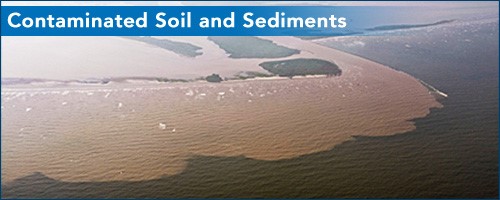There are a variety of techniques including thermal, biological and mechanical processes for soil and sediment remediation, the aim of which is to significantly minimise and reduce the adverse effects of soil pollutants and contaminants. Scientific research is being undertaken to develop new remediation methods also known as technical soil protection methods that have the potential to not only minimise the harmful effects of soil pollutants but may completely eliminate them from the environment altogether.
A collaborative approach to soil and sediment remediation
Scientists are pursuing a collaborative approach to developing technical soil protection methods by integrating scientific knowledge from different areas such as microbiology, soil biology, chemistry, engineering and environmental sciences. For effective soil remediation it is vital to understand the characterisation of the organic matrices of soil, soil microbiome and the sorption/desorption potential.

A collective approach can be applied to deal with pollution problems relating to contaminated sediments by integrated study of the dehydration, permeability alterations, phytostabilisation and shrinkage and developing an effective land remediation service. Other soil pollution management methods used to separate contaminated sediments and prevent any contaminants being released include disposal techniques such as subaqueous disposal/capping and storing underground in salt caverns.
Which soil remediation approach to use?
The following methods have been used to handle soil contamination:
• excavating and disposing of the contaminated soil at a hazardous waste landfill site
• Using ex-situ methods to treat the contaminated soil
• Capping the soil in-situ using a water-resistant material and covering with clean topsoil
• Restricting use of the contaminated site and abandoning the contaminated soil
Selecting the right soil remediation approach https://soilfix.co.uk/services/groundwater-soil-remediation-services is dependent on different factors such as the physical properties and composition of the soil, soil type, determining the feasibility of isolating the contaminant, cost, etc.
Current remediation methods
Effective soil and sediment remediation methods used today include:
• Barrier systems: technology to control contamination by avoiding contaminant migration.
• Solidification: mixing a bonding agent with the contaminant and creating a product that is mechanically solid.
• Excavating and removing: a process that involves quarrying, hauling and disposing.
There are also a wide variety of electrochemical, biological and thermal treatments as well as soil washing, capping and stabilisation that also provide effective methods for the reduction or elimination of soil contaminants from the environment either in-situ or ex-situ.




